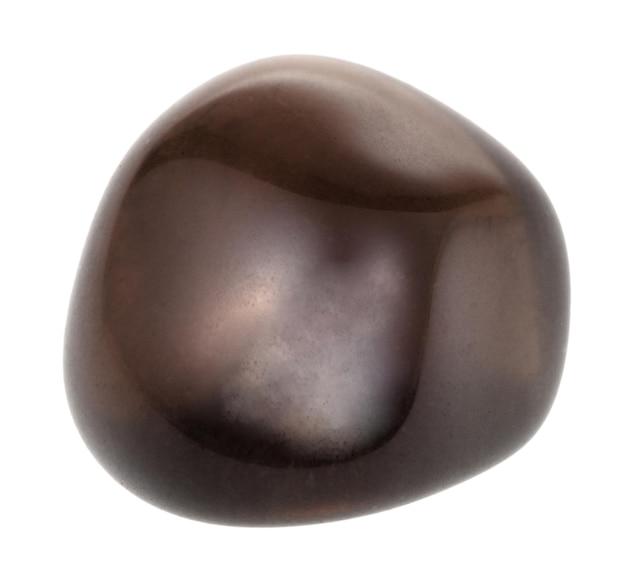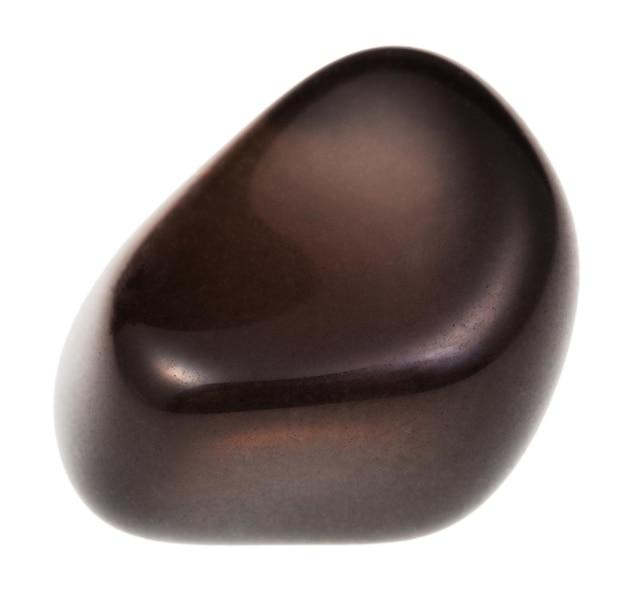Obsidian and Apache Tears are both intriguing stones with dark, mysterious allure. But what sets them apart? In this blog post, we will delve into the distinctions between these two unique stones and explore their individual characteristics, benefits, and uses. From understanding their origins to unraveling their symbolic meanings, we will address your burning questions and provide insights into these fascinating gemstones.
Whether you’re wondering about the metaphysical properties of obsidian, seeking clarity on which stone resembles obsidian, or curious about the significance of Apache Tears, this comprehensive guide has got you covered. Join us as we shed light on the differences between obsidian and Apache Tears, helping you make an informed decision when it comes to incorporating these alluring stones into your life.
So, let’s embark on this journey of exploration and discovery, bringing these mesmerizing gemstones into focus.

What is the Difference Between Apache Tears and Obsidian?
Obsidian and Apache tears may both belong to the same volcanic glass family, but they are as unique as apple pie and pumpkin pie. While they share some similarities, understanding their differences will help you navigate the world of gemstones with confidence and style.
Origins: Born from Fiery Fury
Obsidian, the fiery rebel of the gemstone world, forms when volcanic lava cools down rapidly. Its turbulent birth leaves it with a distinctive texture and appearance. On the other hand, Apache tears, like a teardrop from the heavens, are a specific type of obsidian that originates from the volcanic regions of the United States, particularly Arizona. The name Apache tears derives from a Native American legend, adding to their mystique.
Color: A Tale of Darkness and Mystery
If obsidian were a character in a noir novel, it would be the embodiment of darkness itself. This enigmatic gemstone usually has a jet-black color, reminiscent of a moonless night sky. Apache tears, however, add a twist to the narrative. Borne from the tumultuous desert grounds, they take a lighter tone, revealing a semi-translucent hue that ranges from smoky gray to brownish-black. It’s as if obsidian donned a cloak of earthly secrets.
Shape: Aesthetic Appeal
Whereas obsidian can be found in various shapes and sizes, including rough and jagged forms, Apache tears possess a sleek and polished appearance. These petite pebbles, polished smooth by the hands of time, resemble small teardrops, making them perfect for jewelry or as talismans to ward off negative energy. Obsidian, however, wears its untamed nature proudly, showcasing its raw edges and natural beauty.
Metaphysical Properties: Legends and Healing Powers
Both obsidian and Apache tears hold captivating metaphysical properties. Obsidian is known as a protective stone, shielding its user from negativity and psychic attacks. It promotes self-discovery, helping you face your inner demons with courage. Apache tears, in addition to their protective qualities, are said to bring comfort during times of grief and emotional healing. Legend has it that they were born from the tears of Apache women mourning the loss of their brave warriors. Today, they still offer solace to those in need.
Historical Significance: Tales from the Past
Obsidian possesses a rich historical legacy. Ancient civilizations, such as the Mayans and Aztecs, revered obsidian for its sharpness, using it to craft weapons and tools. Apache tears, too, have their own stories to tell. According to Native American folklore, these glistening stones were discovery companions to those wandering the desert lands, acting as guides and protective talismans.
As you can see, while Apache tears and obsidian share a volcanic origin, they have distinct characteristics that set them apart. Whether you’re drawn to the mysterious darkness of obsidian or the comforting allure of Apache tears, both gemstones offer a slice of beauty and wonder to adorn your life.
So, the next time you’re on the hunt for the perfect gemstone, remember: choose obsidian if you’re looking for a darker companion, but opt for Apache tears if you want a touch of earthly secrets with a comforting embrace. Happy gemstone hunting in the cavernous depths of this mesmerizing rock family!

FAQ: What is the Difference Between Apache Tears and Obsidian?
What stone looks like obsidian
Obsidian has a distinct look with its smooth, shiny, and glass-like appearance. However, there are a few stones that may have a similar look but aren’t exactly obsidian. One such stone is black onyx, which also has a glossy black surface. However, onyx is usually banded and has a different crystal structure than obsidian.
Is obsidian worth anything
Obsidian, in terms of monetary value, is not considered a highly valuable gemstone. Its worth primarily lies in its metaphysical properties and its beauty as a natural stone. However, there are some rare types of obsidian, like rainbow obsidian or snowflake obsidian, which may be more sought after by collectors.
What are the benefits of wearing black obsidian
Black obsidian is believed to have various benefits when worn as jewelry. It is considered a powerful protective stone that helps absorb negative energies, promote grounding and balance, and provide strength and support during challenging times. Its reflective properties are also said to assist in self-reflection and personal growth.
Is obsidian toxic
No, obsidian is not toxic. It is a naturally occurring volcanic glass and does not pose any health risks. However, it is important to note that obsidian can have sharp edges, so handling it with care is recommended.
Where should I put black obsidian in my house
To fully harness the protective energies of black obsidian, it is commonly placed near entryways, windowsills, or in areas where negative energy may accumulate. Additionally, placing black obsidian in bedrooms or meditation spaces can create a calm and grounded atmosphere.
Who should wear black obsidian
Anyone can wear black obsidian, as its protective properties can benefit everyone. However, it is particularly popular among individuals seeking emotional support, aid in overcoming past traumas, and protection from negative energy. It’s always important to listen to your intuition when choosing gemstones or crystals to wear.
What is Apache Tears good for
Apache Tears are a type of obsidian that got their name from a Native American legend. These small, rounded stones are known for their ability to provide comfort during times of grief or loss. They are believed to help relieve emotional pain, promote healing, and provide spiritual protection.
Is obsidian and black tourmaline the same
No, obsidian and black tourmaline are not the same. While both are black stones and possess protective properties, they are different in composition and origin. Obsidian is a natural volcanic glass, while black tourmaline is a complex boron and aluminum silicate mineral.
Does obsidian exist
Absolutely! Obsidian is a fascinating and naturally occurring volcanic glass formed when lava cools rapidly. Its formation can be influenced by various factors such as the composition of the lava and the cooling process. The result is a striking black stone with a smooth and glossy surface.
Is Apache Tears obsidian
Yes, Apache Tears are a type of obsidian. Like other obsidian varieties, they are formed from volcanic activity. What sets Apache Tears apart is their small, rounded shape, often resembling tears. They are named after a Native American legend that tells a story of grief and sorrow.
Is black obsidian magnetic
No, black obsidian is not magnetic. It does not possess any magnetic properties. However, it is a highly reflective stone that can “attract” energy and help repel negativity.
What does obsidian symbolize
Obsidian is associated with several symbols and meanings. Due to its volcanic origin, it is often connected to the elements of fire and earth. In metaphysical realms, obsidian symbolizes protection, grounding, transformation, and self-reflection. Its dark color is also thought to represent the depths of the subconscious mind.
Can you put obsidian in a rock tumbler
Obsidian is already naturally smooth and polished, so it does not require tumbling in a rock tumbler. Putting obsidian in a tumbler may not yield any noticeable changes in its appearance. However, if you have rough or unpolished obsidian, tumbling can be used to shape and polish it.
Is onyx or obsidian better
The choice between onyx and obsidian depends on the specific use and personal preference. Onyx is a banded variety of chalcedony and is valued for its unique patterns and colors, while obsidian is known for its smooth and shiny black appearance. Both stones have their own distinctive beauty and metaphysical properties.
Can you see through Apache Tears
No, Apache Tears are opaque and do not allow light to pass through them. Their dark color and polished surface give them an almost mirror-like appearance. They are perfect for scrying or reflective practices.
Is obsidian the same as jet
No, obsidian and jet are different materials. Obsidian is a natural volcanic glass formed from cooling lava, while jet is a type of organic gemstone derived from fossilized wood. Although both are black in color, they have different origins and compositions.
How do you know if Apache tear is real
To determine if an Apache Tear is genuine, there are a few things you can look for. Genuine Apache Tears are typically smooth, polished, black stones with a glassy shine. They may also have slight variations in color due to natural impurities. Additionally, verifying the sourcing of the stone can help ensure its authenticity.
Why is Apache Tears called that
The name “Apache Tears” originates from a Native American legend. According to the legend, a group of Apache tribe members were attacked by the cavalry. As the women and children watched their loved ones die, they shed tears that turned into small, black stones. These stones were then known as Apache Tears, representing the grief and tragedy experienced by the tribe.
Is obsidian a gemstone
Obsidian is not classified as a traditional gemstone, but it is highly valued in the world of crystals and metaphysical properties. Its striking appearance, smooth texture, and protective qualities make it a sought-after stone for jewelry and spiritual practices.
How can you tell obsidian from glass
Distinguishing obsidian from glass can sometimes be challenging, as they share a similar appearance. However, there are a few key differences to look for. Obsidian often has curved or conchoidal fracture patterns, while glass tends to have smooth, straight fractures. Obsidian may also have tiny air bubbles or a subtle rainbow sheen due to its natural formation.
How can you tell if obsidian is real
To determine if obsidian is authentic, you can perform a few tests. One simple method is the scratch test: Obsidian has a hardness of around 5-5.5 on the Mohs scale, so it should not be easily scratched by common materials. Additionally, genuine obsidian has a distinctive “glassy” sound when struck together, unlike imitations or glass.
Can I sleep with my obsidian bracelet
Yes, it is safe to sleep with your obsidian bracelet. In fact, many people believe that wearing black obsidian while sleeping can enhance its protective and grounding properties. However, personal comfort is essential, so if you find the bracelet bothersome or restrictive during sleep, it’s perfectly fine to remove it.
Are onyx and obsidian the same
Onyx and obsidian are not the same stone. While both are dark in color, they have different compositions and origins. Onyx is a banded variety of chalcedony, whereas obsidian is a type of volcanic glass. Each stone offers its own unique beauty and metaphysical properties.
Remember, knowledge is power, and now you have the power to distinguish between Apache Tears and obsidian! Whether you’re drawn to their protective energies, attracted to their glossy appearance, or simply fascinated by their unique legends and meanings, these stones are sure to captivate your attention and enhance your crystal collection. So go forth, explore, and invite the mystique of these beautiful stones into your life!